Maksym Armash, a Ukrainian living and working legally in Virginia, thought it would be simple to bring his Ukrainian bride-to-be into the U.S.
With his fiancée and two other Ukrainians, he crossed from Tijuana, Mexico, to San Diego, believing that if he were detained by U.S. agents, it would be brief.
“No one was expecting to be in a jail for 18 days,” Armash said. “No one was expecting this at all.”
Although President Joe Biden has committed to taking in 100,000 Ukrainian refugees, hundreds are choosing to illegally cross into the U.S. from Mexico in a desperate attempt to flee quickly and reunite with family.
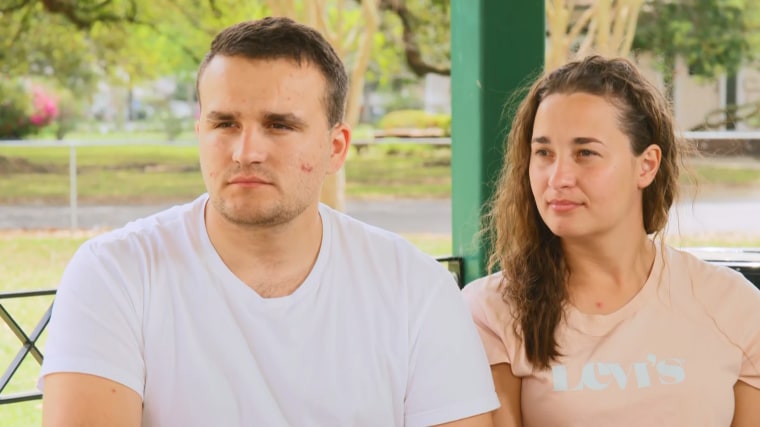
Many are surprised to find that rather than being welcomed to the U.S. as refugees, they’re running into the realities faced by Central Americans and other immigrants fleeing violence to come to the U.S. They’re placed into the custody of Customs and Border Protection and then transferred to Immigration and Customs Enforcement, often waiting weeks before seeing the outside of a cell.
According to data obtained by NBC News, as of March 25 there were 120 Ukrainians being held in ICE custody. Though many have been cleared for release, the agency continues to process them just as they would migrants coming to the U.S. from other desperate situations around the world. They’re shackled and transferred to detention centers behind barbed wire, where they may wait weeks before being released and given a date for an immigration court hearing.
With Russia invading Ukraine, Armash wanted to get his wife out of Odesa. He had seen videos on YouTube that claimed Ukrainians without visas who wanted to get into the U.S. should fly into Mexico and then present themselves to U.S. agents at the border. He and his fiancée, Olena Poloziuk, flew separately to Mexico to meet and prepare for the crossing.
Once in Mexico, they met Vitaliiye Vecheva and his wife, Viktoriiaye, who had been married in October in Ukraine. Vitaliiye Vecheva’s grandmother, who was living in South Carolina, helped bring her grandson to the United States legally in 2017. In early March, he sent for his bride, realizing the war had made it impossible for them to start a life together in Ukraine.
He had seen the same videos on YouTube in Russian and Ukrainian as Armash about crossing the border. Like Armash and Poloziuk, the Vechevas flew to Mexico.
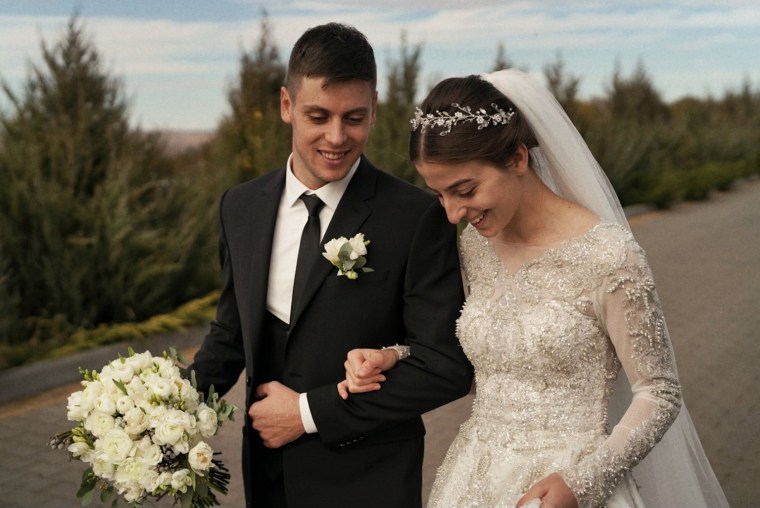
After joining forces in Mexico, the two couples prepared to cross, following the instructions on the videos. They paid a driver to drive them across the border and then presented their Ukrainian passports to U.S. agents at a border checkpoint in San Diego.
“When we came through Mexico we were joking about it, we were going to be in jail for two days,” Armash told NBC News, referring to immigration custody as jail. Of the four Ukrainians, Armash speaks the clearest English, so he told their story, often translating for his friends.
The videos had led them to think that if they were detained, after 48 hours they would be released to live freely in the U.S. But that’s not what happened.
Armash said the two couples were stopped by Border Patrol officers three times, and three times they were sent back to Mexico because the women had no visas. On the fourth attempt, when they were once again stopped by Border Patrol agents and told to return to Mexico, the women tried to make a run for it into U.S. territory. They were caught and detained by the Border Patrol.
The two men, legal residents of the U.S., were immediately separated from their partners. They found a place to stay in San Diego as they waited to hear what had become of the women.
Armash said he later learned Poloziuk had to sleep on the floor of a crowded room with thin plastic as a blanket while in Border Patrol custody — a common experience for the Central Americans who form the bulk of the migrants held at Border Patrol stations.
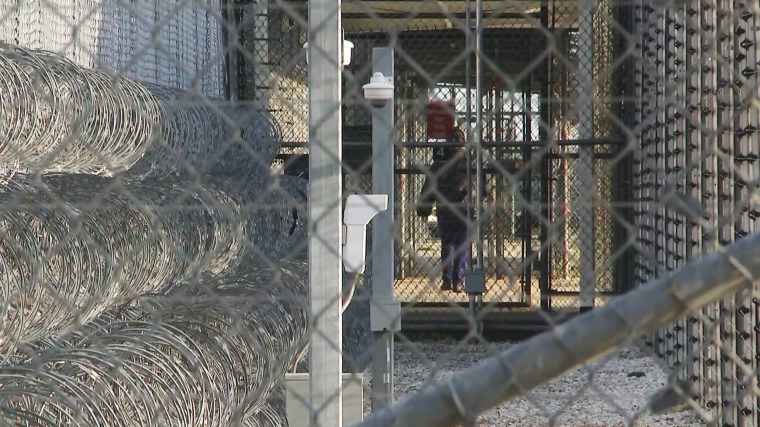
As days turned into a week, and the men had no contact with their partners, they grew desperate for answers.
“I was sending emails, calling every number I could find online,” Armash said. “CBP offices and emails to the governor of Virginia and all that. I even sent a message to Biden on Instagram. Biden, Harris and all of [those] big people.”
He tried explaining his situation, telling them his fiancée was a refugee from Ukraine, but he didn’t hear back.
A week after her apprehension, Armash got a call from his fiancée, Poloziuk. She and Viktoriiaye Vecheva had been shackled and flown more than halfway across the country and were now inside the South Louisiana ICE detention center in Basile. There she was finally able to call Armash. She said she had her own bed, but she had no answers on when she might be released.
Vitaliiye Vecheva, speaking through a Russian translator, said it was there that his wife began to grow tearful and angry. The unknown length of her detention was taking a toll.
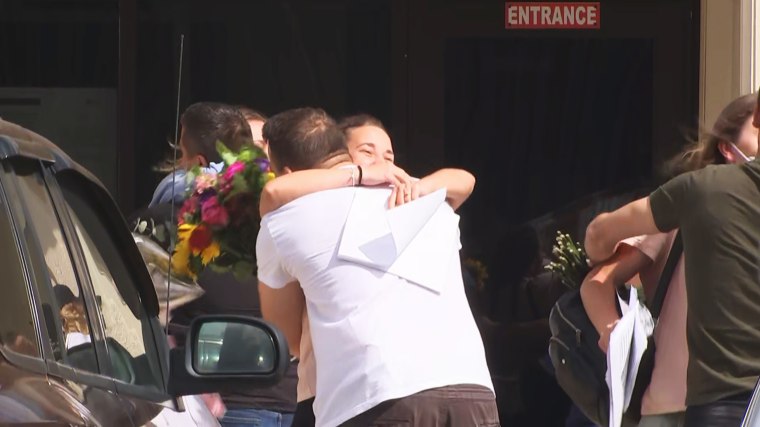
“There is a sense of psychological trauma because no one is answering questions,” he told NBC News on Monday, March 28. “We can’t reach anyone by phone. She has been there for 18 days now. She is crying. She is worried. Her nerves are shot.”
On Tuesday, however, the two men got the word they’d been waiting for: Poloziuk and Viktoriiaye Vecheva would be released the next day.
Armash was waiting with flowers and balloons in the windy swamplands of Louisiana when his fiancée walked out of the detention center, 1,500 miles from where they were separated.
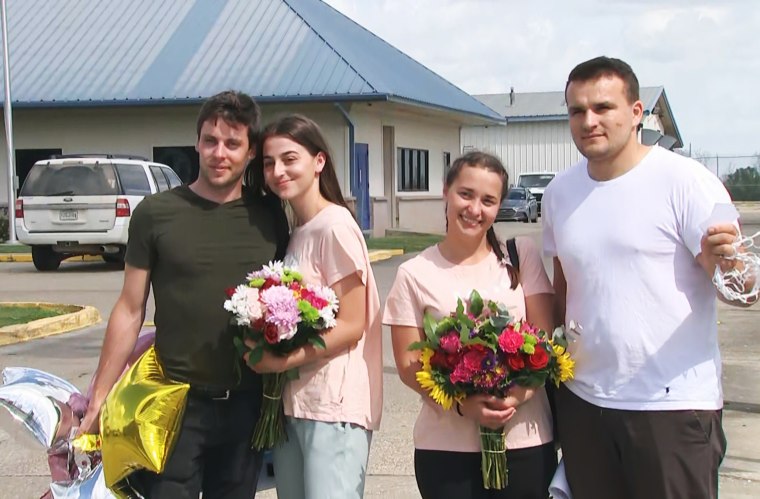
“Hi, darling,” Poloziuk said, jumping into Armash’s arms.
“Phew, it finally happened,” he said.
Outside the detention center, Poloziuk and Viktoriiaye Vecheva explained that they were happy to be released, but worried about other Ukrainian women still inside. Poloziuk estimated that during her time in ICE custody, she saw about 100 Ukrainian and Russian women come through the center.
Taylor Levy, an immigration lawyer, said while countries in the European Union and Canada are welcoming refugees, Ukrainians are bumping up against the realities of the U.S. immigration system, and what Central American asylum-seekers experience regularly.
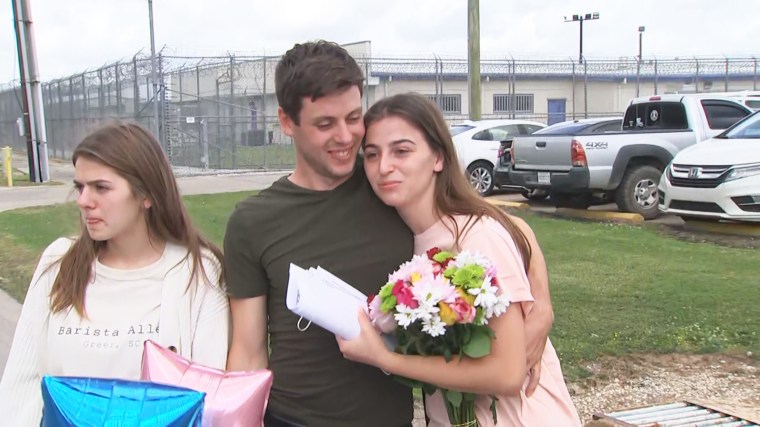
“What we’re seeing is the United States not welcoming these people with dignity and respect. They’re treating them the same way that the system always treats people seeking protection, which means horrific conditions, freezing cold cells, family separation from your loved ones — from your adult children, from your fiancées, from your husbands and wives — and then being shackled and sent off to remote detention centers,” Levy said.
Time spent by migrants in ICE custody can range up to six months, a court-imposed limit, but can sometimes be even longer.
In a statement, ICE said: “Regardless of nationality, ICE makes custody determinations on a case-by-case basis, in accordance with U.S. law and Department of Homeland Security policy, considering the merits and factors of each case while adhering to current agency priorities and guidelines ICE focuses its civil immigration enforcement priorities on the apprehension and removal of noncitizens who pose a threat to our national security, public safety, and border security, consistent with all legal requirements and applicable court orders.”


